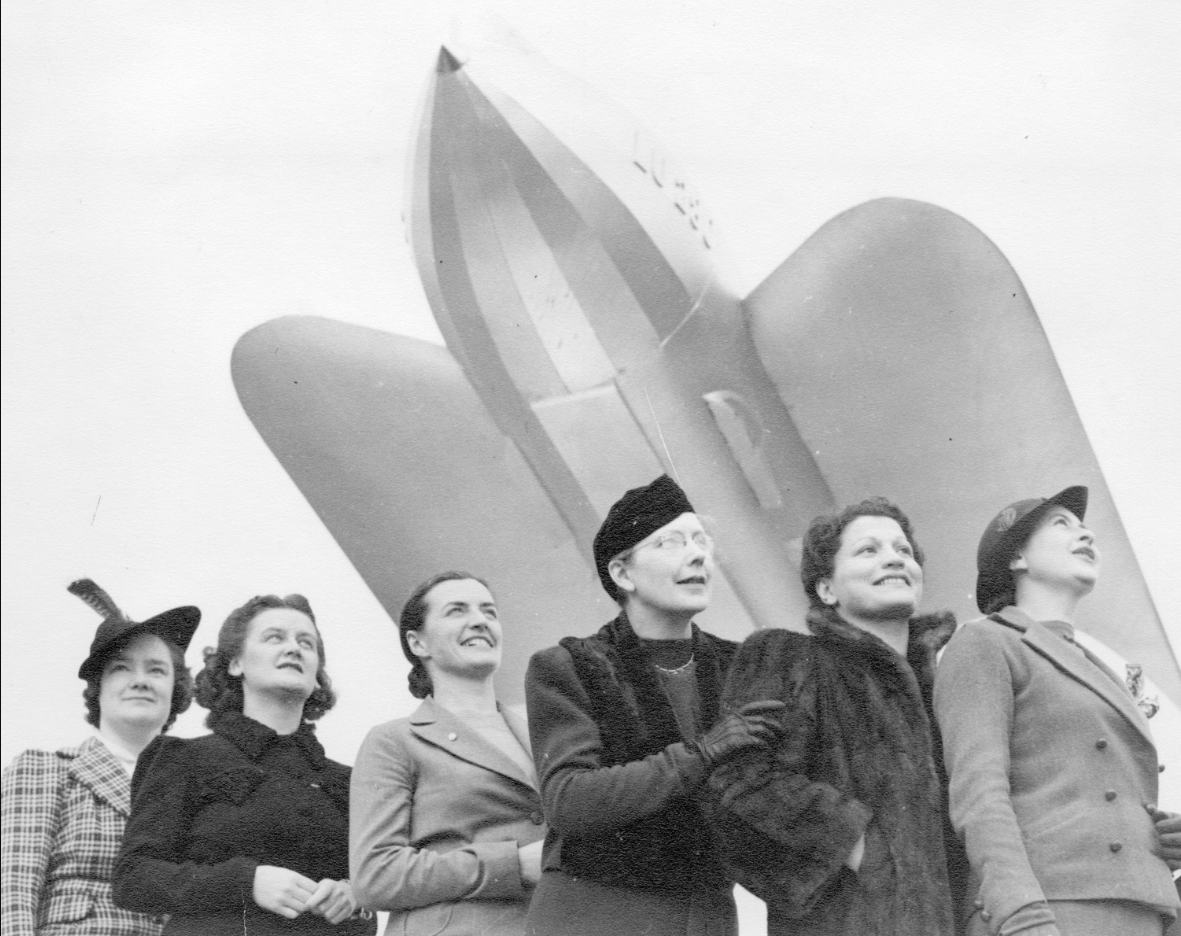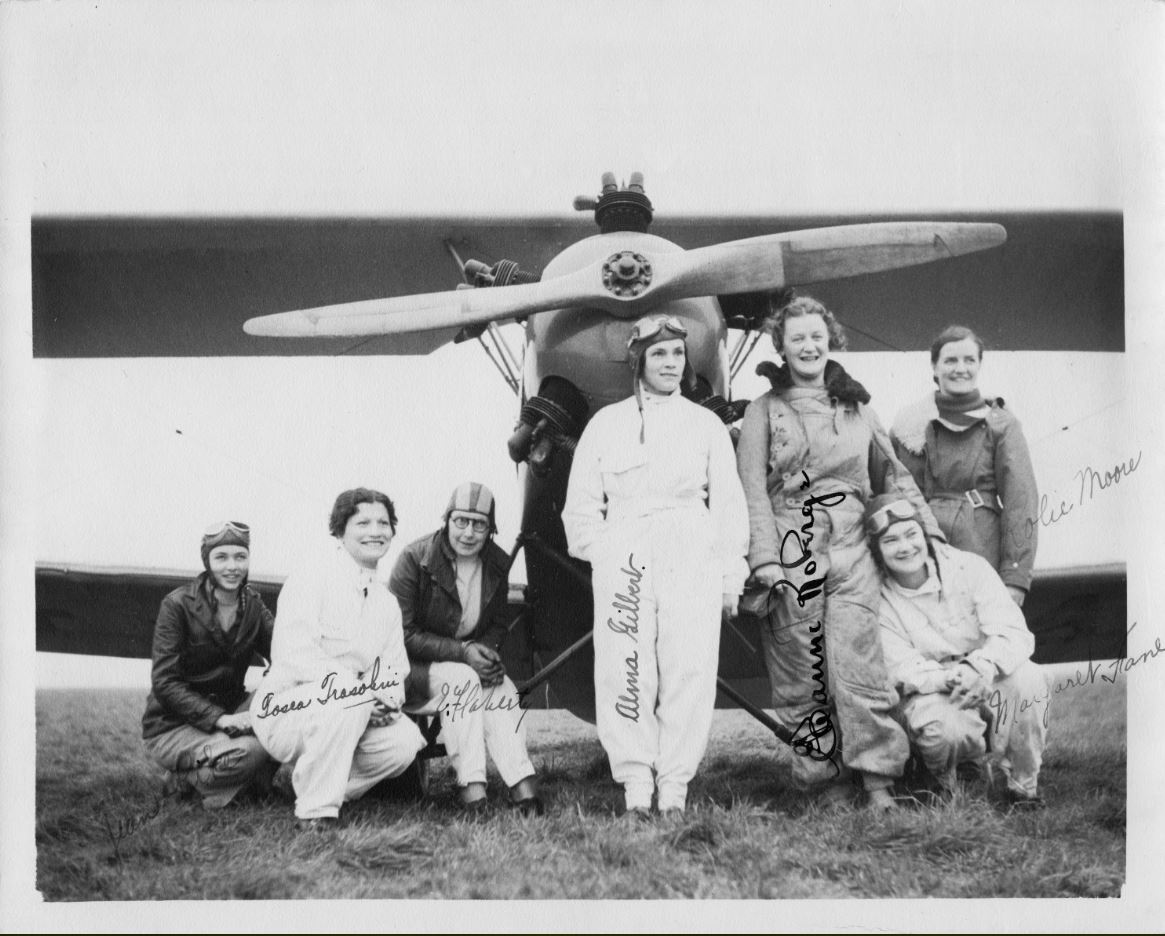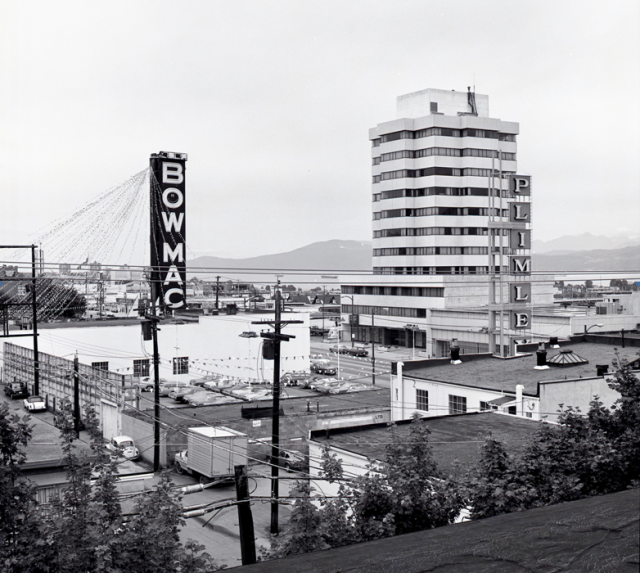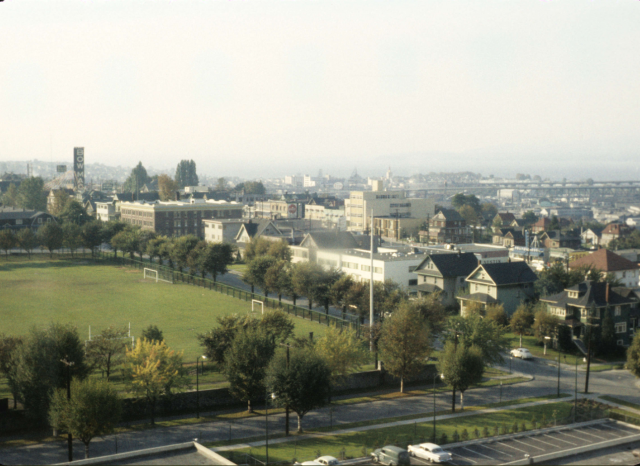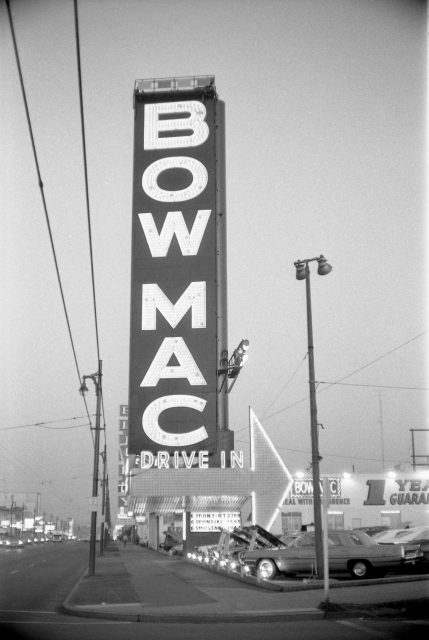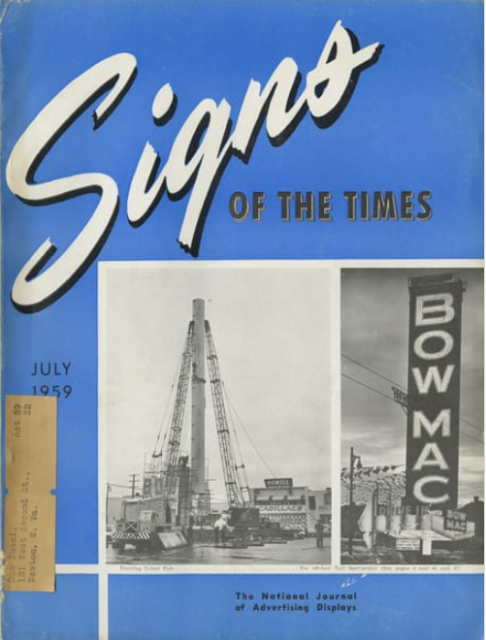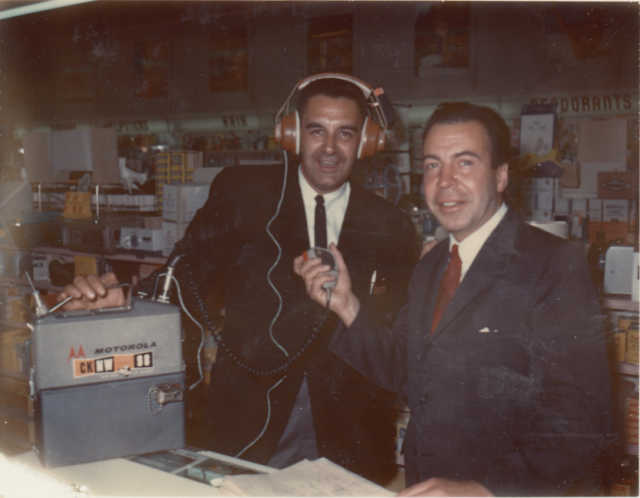The rocket ship at the southwest end of the Cambie Street Bridge is a replica of one built in 1938 for the annual PNE parade.
Story from Vancouver Exposed: Searching for the City’s Hidden History

Cambie Street Bridge:
Have you ever wondered why there is a snazzy-looking rocket ship at the southwest end of the Cambie Street Bridge? It was built for Expo 86, then shifted by helicopter to its current site after the fair ended. It’s actually a replica of a rocket ship that was designed by Lew Parry and built for the Sheet Metal Workers Local 280 as a float in the 1938 PNE parade.

After Vancouver Exposed came out last Fall, Paul Hancock sent me a photo that his uncle had taken of the PNE parade (above). Thanks to Tom Carter for pinpointing the location at the northeast corner of Georgia Street looking down Howe Street.
Built by Sheet Metal Workers:
According to a story in the Province dated August 25, 1938j, the original rocket ship was built through the efforts of 50 members of the Sheet Metal Workers’ International Association in several city shops. It weighed “half a ton, is 18 feet long, 13 feet high and nine feet wide and made of tin, iron and copper.”

The float was awarded the grand prize. Lew Parry, who became a highly regarded film producer, also designed a float for the Sheet Metal Workers’ in 1936 called “The Modern Aim,” which also won the grand prize at the PNE that year.

VIA:
The original streamlined rocket ship sat at the Vancouver Air Terminal until 1972, when its rusting frame was thrown into the landfill. The replica was made using old photos of the original and advice from Parry, who turned 80 as Vancouver celebrated its centennial.
This replica is made of hardier stuff than its predecessor—stainless steel and brass which will hopefully see it through another 100 years.
You might also want to make a note on your calendar that a Centennial Time Capsule buried at the base of the rocket, is scheduled to be dug up and opened in 2036. According to the CoV website “it includes items such as an Expo 86 passport with stamps of all the pavilions and recorded messages from local celebrities and many other things.”

With thanks to Donna Sacuta of the BC Labour Heritage Centre


